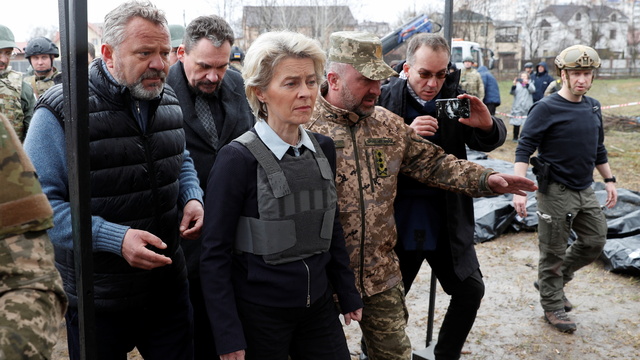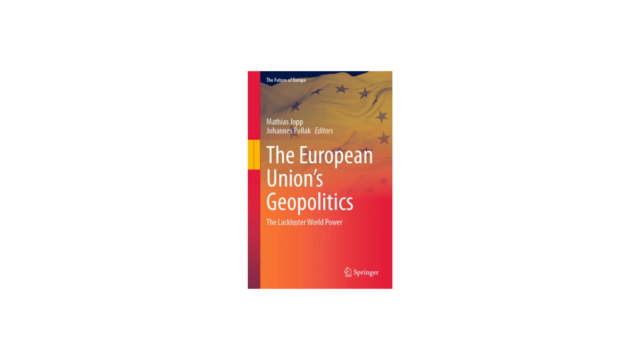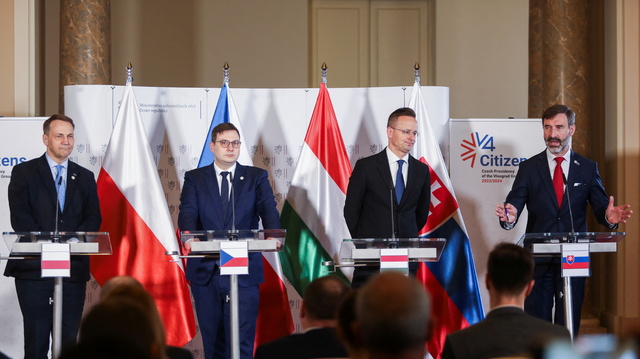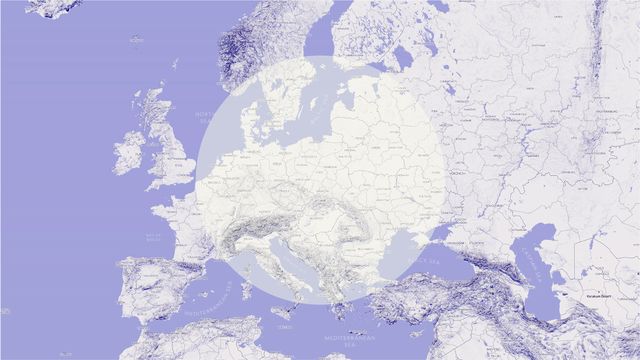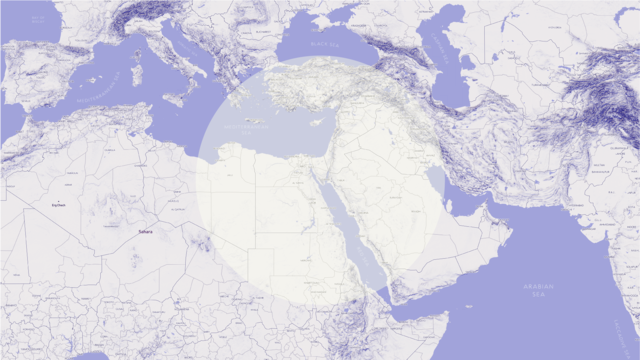Jihadi Foreign Fighters and the Threat to Czechia

paper
Following the 2020 Vienna terrorist attack, jihadi terrorrism came to the forefront of threats for Central Europe. Even though Czechia has never been a primary target of a major jihadi attack, it still needs to understand the nature of the threat of cross-border radicalization and challenges related to European citizens who returned to the region after joining jihadi groups in Syria and Iraq. What are the internal and external threats of jihadi terrorism to Czechia? What should the policymakers do to prevent possible jihadi attacks?
INTRODUCTION
Jihadi terrorism has been a persistent challenge to security in Europe in the recent years. Although Czechia has not been a primary target of terrorism,
the issue is not to be underestimated. The November 2020 Vienna attack was
a reminder that governments and policymakers in the region have jet to address radicalisation and networks of Islamic State (IS) sympathizers. More than 5000 European citizens joined the IS in Syria and Iraq between 2012 and 2017. About 1/3 died in the warzone, 1/3 returned within a year after their journey,
and many have been detained in camps in Syria: mostly women and children. The issue of foreign (terrorist) fighters (FTF) remains largely unsolved by European governments and this may create security threats in the near future. There are four main challenges related to FTF.
- Most EU governments are reluctant to bring their FTF from Syria to Europe. Although a few countries made steps to at least help women and children come back home, non-repatriation remains a primary approach. Some states strip individuals of citizenship for joining IS. However, the non-repatriation of European citizens from detention camps, puts them at risk of illness and further radicalization. Additionally, there is a concern of unfair trails, if European countries do not take responsibility for prosecuting their IS citizens and instead rely on Iraqi courts or international tribunal.
- Governments fear rehabilitation failures. Returning FTF to Europe where they can be prosecuted and later reintegrated is an option without a strong political support. The possibility of repatriation is affiliated with security risks of bringing people who are radical or may fail to deradicalize and thus, carry out new terror attacks in Europe. The perpetrator of the Vienna attack was previously prevented from going to Syria. He was sentenced to 22 months but spent in prison only 8 and was released due to his young age. He went through a rehabilitation programme tailored to help individuals disengage from the IS ideology.
- The radicalization of new sympathizers remains a major concern, especially during the COVID19 pandemic when radical socialization has almost entirely shifted online. The profiles of the perpetrators of the latest jihadi attacks in Europe indicate that the IS ideology remains appealing to youngsters across Europe.
- There is a significant increase of terrorism-related offences in the recent years. Hundreds of extremists who either returned from Syria
or were part of recruitment networks in 2012-2016 will be released in the next years. This means a growing number of people with short-term sentences, who might decide to get involved in terrorism once again.
Part of these challenges are external, and others are internal to Czech security. Although Czechia has not been the target of a major terrorist attack, it is important the government to be ready to respond to such challenges. This policy paper defines and analyses the external and internal jihadi terrorism threats to Chechia and recommends policies to address them.
THE JIHADIST THREAT TO CZECHIA
Czechia witnesses two types of threats concerning FTF and jihadism: internal and external. These threats require a precise threat analysis and policies with the potential to identify and tackle security challenges that may lead to terrorist violence.
DEFINITION OF THE THREAT
Internal Threat
The internal one refers to the possibility of radicalization of individuals who live in the country. Extant research suggests that a combination of factors contribute to the heightened risk of internal (also termed homegrown) radicalization in Western or generally non-Muslim majority countries. First, existing Salafi-jihadi or militant jihadi networks. The existence of established Salafi-jihadi networks in a given country, oftentimes out of reach of authorities, is an important factor that serves as a pool for prospective homegrown terrorists. Second, and this is interrelated with the external threat, the existence of veteran foreign fighters abroad might also contribute to the heightened threat of homegrown jihadi terrorism. Foreign fighters abroad might make use of online communication channels, social platforms, or individual messengers to reach out to their potential sympathizers back home; or they may also travel to their home countries. In the latter case the likelihood is high of veteran foreign fighters contributing – with their experience, determination, and skills – to (re)creating jihadi cells back home, radicalizing individuals within their reach. Third, the existence of marginalized communities, i.e., socioeconomically weak ghetto-organized communities, usually with immigrant background, with high unemployment rates, few prospects of social elevation, and a deeply-rooted (for some) sense of economic, religious, racial, ethnic, and political discrimination. Multiple case studies have shown that such enabling environments serve as
a breeding ground for radicalization of all sorts, not least for Salafi-jihadist radicalization. Individuals from all backgrounds and walks of life might join extremist groups, particularly given they face profound personal trauma, loss, and the lack of prospects and run into “radicalization facilitators”: radical imams, former or current jihadists, or reputable peers. Yet individuals stemming from marginalized socioeconomic backgrounds, often with a history of petty crime, might be more inclined to turn to Salafi-jihadist radicalization as a way of overcoming their past and choosing the “divine path” of redemption through violent action.
External Threat
The external threat concerns a threat from extremists in neighboring countries like Austria or Germany who can easily travel across the region. Individuals who either returned from Syria or have been part of recruitment networks will be released in the next years in countries geographically close to Czechia.
FTF who returned to the region shall be considered an external security risk to Czechia. Most of them have completed or will complete their sentences in the next years. A recent study by the International Centre for the Study of Radicalisation (ICSR) shows an increase of attacks that follow an inmate’s release. Perpetrators of a terrorist plot have often previously got acquainted with each other in prison. Of 22 prison-related attacks and plots since 2015, twelve involved jihadists who were recently released, according to the ICSR research. This means that particular attention should be paid to individuals with terrorism-related sentences. Their reintegration is a matter of not only national but also regional security, and therefore, it is an external security challenge to Czechia.
In addition, a number of people attempted to become FTF but were prevented from local security authorities. For instance, between 50 and 90 Austrian citizens were stopped from traveling to Syria, as many of those who were caught by the police, were imprisoned with short-term sentences. This variety of radical actors in countries neighboring to Czechia requires in-depth analysis based on information whether these individuals go through (effective) reintegration programmes; whether security agencies have the capacity to keep track of them after they are released.
THREAT ASSESSMENT
This having been said, we turn to the threat assessment based of the two major types of threats, internal and external. Drawing on the classification provided in the Definition section, we consider the risk of internal radicalization in Czechia as low. First, Czechia lacks established Salafi-jihadist networks. While Czech media have recently covered several individual cases of Czech Salafi-jihadis, they are not representative of a larger population of cases; and they certainly
do not speak to the existence of an established Salafi-jihadi community in Czechia. The lack of Salafi-jihadi community is an important factor that serves as an organic obstacle to prospective homegrown mobilization of its members. Second, while there are very few known cases of individuals who have traveled abroad, namely, to Syria, to participate in the civil war on the jihadists’ side, we know of no Czechia-born jihadi veteran foreign fighters. The risk of such veteran foreign fighters returning to Czechia with the objective of establishing jihadi cells is thus currently missing. Third, Czechia lacks ghetto-styled immigrant neighbourhoods. Its nominally-Muslim ethnic communities are organized along ethnic, rather than religious, lines. Czechia’s Muslim communities themselves are fully integrated with the majority population into country’s socio-economic life, and no marginalization is underway of the country’s 20,000-strong
or so nominally-Muslim inhabitants. This, too, serves as an important factor hampering the risk of homegrown radicalization. The pool of prospective jihadi terrorists is nearly absent as are the contributing factors to the threat itself.
Yet we consider the risk of external jihadi terrorism in Czechia as medium. While Czechia itself lacks a population of veteran foreign fighters whose
return to the country would pose direct threats to its security, the existence of (former) foreign fighters in neighboring Germany and Austria, as well as in non- neighboring Western countries within the Schengen zone should be observed with caution. As previously mentioned, (former) foreign fighters might easily cross the borders with Czechia in either direction. Jihadis particularly from neighboring countries might be tempted to enter Czechia to carry out terrorist attacks here given its relative ease. In fact, the well-planned, large-scale, and generally well-executed preventive efforts of counterterrorism units in major Western nations with regard to the threat of jihadi terrorism have increasingly rendering jihadis’ attacks less likely and less lethal. The absence of the incidents of jihadi terrorism in Czechia understandably translates into lesser experience of Czech law enforcement and intelligence services with respect to this specific threat. In this sphere of security, as we have seen in the case of multiple Western nations, it is experience that shapes the readiness – and that experience is missing in Czechia.
CONCLUSION AND RECOMMENDATIONS
There are to two key recommendations this policy paper offers:
- Invest in domestic capacity building to track online activities related to preparation of terrorist violence
- Deepen regional cooperation and intelligence sharing with countries of Central Europe concerning returned and prevented jihadi foreign fighters.
First, Czech security agencies should demonstrate readiness to address the issue of radicalization by raising awareness and building on its capacity to track terrorism-related propaganda and communication. The shift to radical socialization online means that may become even more decentralized and “hidden” in countries with lower threat level. As there are new sympathizers across the region who have been recruited online in the recent year and information on them maybe either limited or not shared among countries in the region. This means closer attention to activities in the online space. The trend in recent years has been about low-scale terror operations without much coordination or more than one attacker involved. Therefore, it is important to enhance regional cooperation concerning online activities of individuals that may speak for preparation of terror attacks. Czechia can also request information on the online activities of individuals with former or current affiliation with radical networks in neighboring countries.
Second, although Czechia is not considered a primary target of terrorism, the Vienna attack happened close enough to contribute to more active engagement with the topic at the political level. There are at least two factors that should be taken into consideration in policy making. First, Czechia is geographically close to countries with higher threat levels such as Austria or Germany. This means that intelligence sharing and information on people traveling between countries in the region shall be enhanced. The latest experience in Austria sheds light on how the domestic intelligence agency (BVT) had failed to act on the information provided by the Slovak police concerning the fact that the attacker had tried to buy ammunition in Bratislava in July 2020. Czechia should learn from the latest experience of Austria and not to overlook intelligence sharing from neighbours in the region and to reform their security agencies in a way they can respond to terrorist threats adequately.



